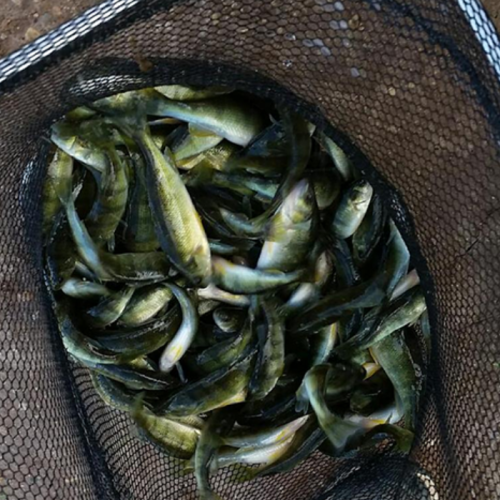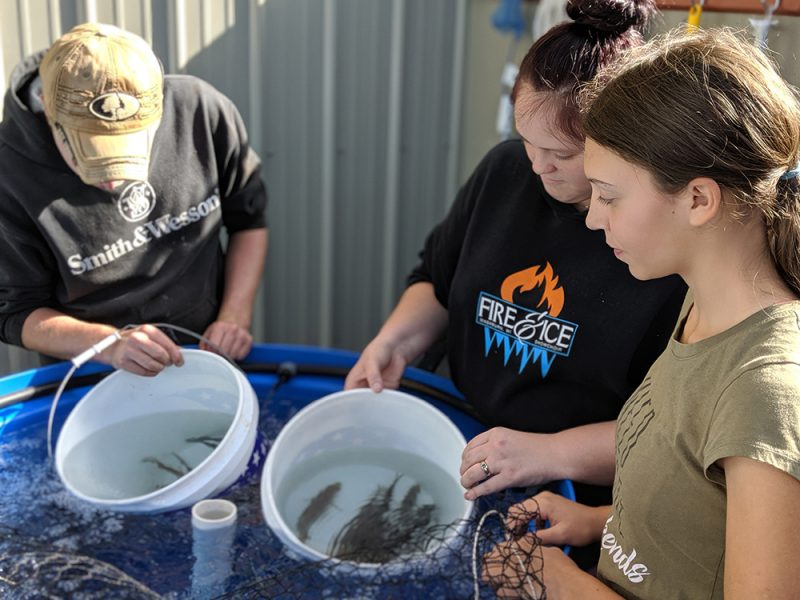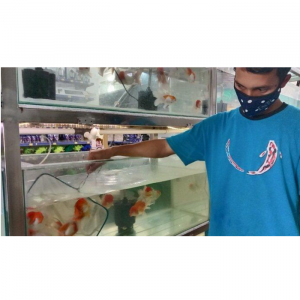
Million Dollar Grant Funds Study of Great Lakes Aquaculture
| Tue, 28 Jul 2020 - 09:20
A million-dollar grant to study aquaculture aims to boost the number of fish farms in the Great Lakes region.
Aquaculture refers to raising fish both to eat and to stock streams and lakes. The industry in the Great Lakes region lags behind much of the U.S, according to the National Oceanic and Atmospheric Administration. The region’s contribution to the industry is considered insignificant compared to coastal areas.
The National Sea Grant office awarded the funds to the new Great Lakes Aquaculture Collaborative. The group brings together scientists and educators from all eight states in the Great Lakes basin.
Listening to fish farmers is the first-year focus, said Amy Schrank, a fisheries and aquaculture extension educator from Minnesota Sea Grant who leads the project. The goal is to identify common challenges that might lead to solutions and further research.
Also read: Six Tips to Make Your Fish Farm More Environmentally Sustainable
Dispelling the myths that aquaculture threatens the fishing industry and environment are among the biggest challenges, Schrank said. Critics associate aquaculture with placing nets into lakes and streams where fish are grown and can pollute water with concentrated waste. Schrank said the industry must educate the public that aquaculture can be sustainable and environmentally friendly.
“We are often talking about on-land recirculating systems where no stream systems and wild fisheries are impacted,” she said. Getting information to the public about sustainable aquaculture is missing and producers would like to have it out there.
Another barrier to industry growth is the use of the phrase “wild caught” on packaging. It gives the impression that farm raised fish are an unhealthy option. But wild caught fish aren’t necessarily better, said Lauren Jescovitch an outreach specialist and educator with Michigan Sea Grant.

Students in Wisconsin bring walleye to temperature before placing them into a tank Image: Emma Wiermaa
“With wild fish, you don’t know how or where that fish was raised or caught or what it ate,” she said. “You just hope that the fish decided to live in pristine waters only eating other prey from those same waters, but in reality, you just don’t know.”
The U.S. imports most of its wild caught and farm raised fish because of packaging costs. About 90% of fish and seafood in the U.S. is imported, according to the National Oceanic and Atmospheric Administration. That creates about a $15 billion trade deficit, the second largest U.S. trade deficit behind oil imports.
The new collaborative will study how much consumers are willing to pay for local fish and emphasize buying local fish.
Also read: Feed and Faeces: The Challenges of RAS Production
Another challenge is that people say they don’t know how to cook fish and don’t like the taste, Jescovitch said.
Several Sea Grant offices added preparation, cleaning and recipe links on their websites. Other offices have information on where to buy locally raised fish. Increasing that information is a project goal.
Phase two of the project will identify how policy issues on aquaculture vary across the states, Schrank said. The aquaculture industry doesn’t operate under USDA supervision, so consumers aren’t familiar with how fish are regulated and safely brought to market.
Aquaculture regulations are enforced by various agencies which vary from state to state.
Industry start-up costs are expensive. There is a “steep learning curve,” said Emma Wiermaa, a University of Wisconsin professor and aquaculture outreach specialist for Wisconsin Sea Grant. Wiermaa works with Sea Grant offices to teach potential fish farmers the business and biology sides of aquaculture.
“I think the most important advice we can give to beginning farmers or those pursuing the industry is to really ‘do your homework’ before investing,” she said. “Unfortunately, there have been many failures in this industry. Much of this can relate back to poor business planning, facility management or lack of expertise.”
Wiermaa encourages potential farmers to visit facilities and build relationships with aquaculture organizations before investing. Wisconsin Sea Grant also supports programs in high schools as part of the hands-on training efforts.
Also read: Helping Seaweed Farming Achieve Its Full Potential
“It is crucial for students to learn about the industry as a potential career choice, not only for sustainable industry expansion but also for students to have a career and placement pathway,” she said.
Despite the obstacles in the Great Lakes region, aquaculture is one of the fastest growing food production sectors in the world. Fish production is expected to increase by more than 30 percent by 2030, according to the United Nations Food and Agriculture Organization.
By: Carin Tunney
Source: greatleaksecho.org






















